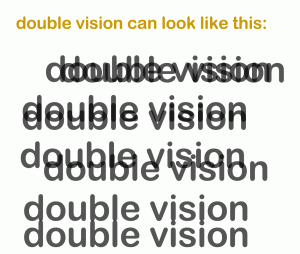How to help your child when they have vision-related learning difficulties
It can often be very overwhelming and stressful as a parent to find that your child is having learning difficulties at school. Children often have different ways of expressing their helplessness if they are struggling in school. They may turn to bullying, or they may hide their frustration and withdraw from classmates and friends. If your child’s learning difficulties are vision-related, then there are several things you can do to help them.
We recommend taking a look at these simple tips to get your child back on track with their learning:
- Take your child for a thorough eye exam. This may solve more than half of the problems, as some learning difficulties are caused by bad eyesight and, when corrected, an improvement may be noticed in your child’s performance in school.
- If your child has been diagnosed with a learning related vision problem like nearsightedness, farsightedness or astigmatism, follow up immediately by doing whatever has been recommended by your optometrist. It could be getting your child glasses or contact lenses, or in some cases, going for surgery.
- Create a support team. Get teachers involved in overcoming the challenge. Become a buddy. Also get the optometrist fully involved. You can encourage your child to reach out to the school for help and support. Siblings should also encourage their brother or sister. Together as a team, the challenge can be overcome.
- Always be sure to show them love, encouragement and support during this process. Help them to understand why they need to have their eyes checked, and how it is going to help them with their learning.
- Ask questions and listen intently. Encourage them to talk about how they are feeling, and when they do, listen and act on what they present. Also, in order to get more of understanding on what your child is experiencing, ask them things like “Where do you sit in class?”, “Can you see the board clearly?”, “Do you feel your eyes go fuzzy or blurry sometimes?”, “Do you find it hard to see the ball or classmates faces during sports class?”
- Provide other means of expression like music, drama classes, computer classes and the arts to help them with this process.
- When you want to buy them toys, get those that can help their motor and eye-hand coordination skills like puzzles, building blocks, modelling clay, pegboards, stringing beads and art tools like pencils, paint, crayons, finger paints etc.
If you suspect your child may be having vision-related learning difficulties, please do not hesitate to book an appointment with Dr. Jean-Pierre Guillon here at Eye5. He has a special interest in children’s vision and learning difficulties, and would be only too happy to help you and your child with this process.
